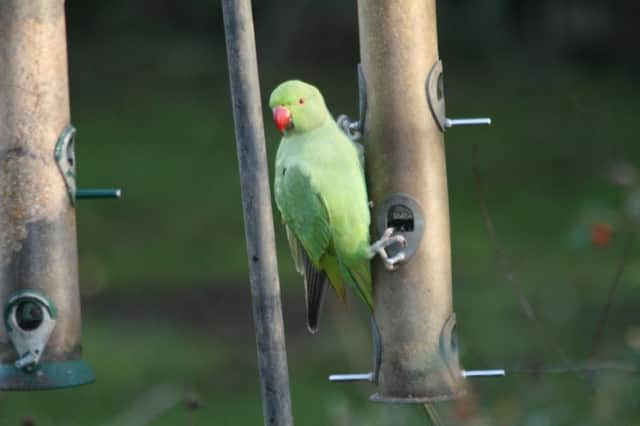Country & Coast: Exotic birds may become common sight in the garden


But on a sunny afternoon an exotic sound rang out from trees growing between the canal and the River Aire, and for about 30 seconds I saw something that is more familiar to people who live along the Nile or the Ganges than this stretch of Yorkshire waterway.
Out of the branches of a tall cypress flew a pale-green bird with flickering wings and tapering tail feathers, repeating its loud “kee-ak, kee-ak, kee-ak” screech as it followed the canal in the direction of Bingley.
Advertisement
Hide AdAdvertisement
Hide AdIt eventually took refuge in another tree and after preening itself for a time obstinately disappeared from view.
By then, though, I was certain that this was a ring-necked parakeet, one of the newest and most colourful species to be given the official status of “British Bird”.
Of course, this crimson-beaked member of the parrot family hasn’t arrived here under its own wing power, but has become naturalised in England as a result of escapes from captivity. Most are found in southern England, and a decade ago I was overwhelmed by the sight and noise of around 300 ring-necks nesting in a London park. A more recent count has suggested that this colony has grown to 2,000.
Confusion with other species of escaped parrots is possible, especially the larger Alexandrine parakeet, and one sceptical birdwatcher of my acquaintance even joked that perhaps I had seen the Norwegian blue of Monty Python fame. But the clincher for me was the Saltaire bird’s smaller size.
Advertisement
Hide AdAdvertisement
Hide AdIt’s still rare in Yorkshire, despite sightings in the wild dating as far back as 1972 when one was spotted at Swinsty Reservoir in the Washburn Valley. A few years later two birds were seen at Spurn, and since then the number of sporadic records from around Yorkshire has increased.
They can turn up anywhere. A friend in North Leeds complains that two of them wrecked her pear tree. There is a birdwatching forum report of someone seeing a bird while waiting for a bus at Cusworth, South Yorkshire, “circling around the rooftops making a din”. And a Wharfedale Naturalists Society member came across a ring-necked in the Hollies housing estate at Burley-in-Wharfedale.
Ring-necks are one of several foreign species to colonise the UK.
Canada geese - which coincidentally were also on the canal at Saltaire - were imported from North America in the 17th century and escaped to the wild in the 1920s. But the biggest colonisation success story belongs to the collared dove, which did not arrive in Britain until the 1950s. Now they are in almost every garden, and I wonder how long it’ll be before ring-tailed parakeets are visiting our bird tables.